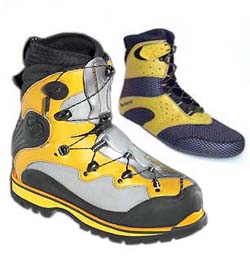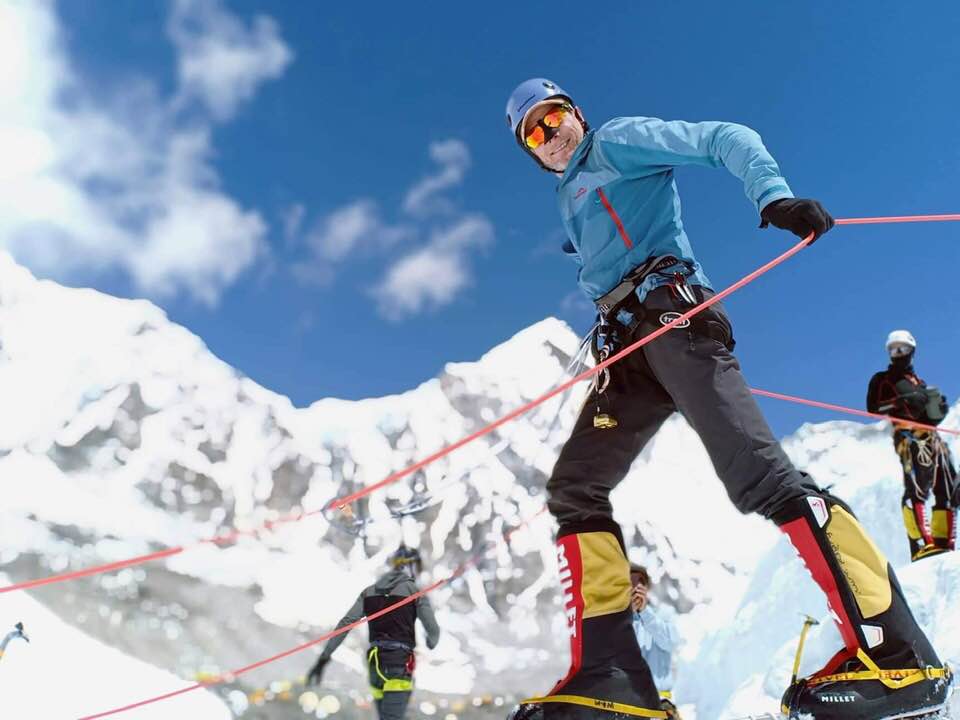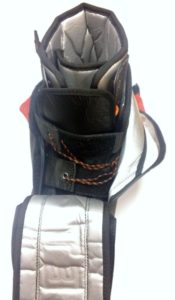How to Choose the Right Mountaineering Boots
Your boots are your all-important connection to the mountain, but finding the right boot is like navigating a broken up glacier! So what boot is actually best? Here’s a guide to help choose the right mountaineering boots.
Mountaineering Boot Basics
What differentiates a mountain boot from a hiking boot? What’s the difference between single, double and triple boots?
Mountain boots are designed with crampons in mind. That means they have a super stiff sole and at least a heel welt and possibly a toe welt as well.
As you walk your foot and boot flexes – if your boot flexes too much your crampon can pop off, hence mountain boots being exceptionally stiff. Mountain boots also have added insulation for cold environments.
This added insulation is what differentiates single, double, and triple boots.
Single Vs. Double Vs. Triple Mountaineering Boots
It all comes down to having the right mountaineering boots for the right job.
Each type of boot is designed for a certain set of temperatures and circumstances. Understanding these will help you select the right boot for your next climb and appreciate why you may need multiple pairs of boots for a goal like The Seven Summits or progressing up to 8,000m climbs like Manaslu & Everest.
Single Mountaineering Boots
Single boots are lightweight and may, or may not, have a toe welt, but they will always have a heel welt. These are fantastic boots for low elevation and warmer climbs such as Mt. Rainier, Mt. Baker and the Australian Alpine Academy in July and August. However, in the greater ranges they are too light to provide adequate warmth against cold and storms. We find if you are looking at a lifetime of mountaineering they offer limited use.
 Double Mountaineering Boots
Double Mountaineering Boots
Double boots are made up of an outer boot shell and removable inner boot, a construction providing additional warmth for colder weather and moderate to high altitudes. One major benefit of a double boot is that the inner liner can be removed and dried in your sleeping bag. This makes them a great choice for longer trips (even on lower elevation, or warmer climbs). You’ll find you use a good pair of double boots for most of your climbs around the world. They quickly take the place of a single boot and are far more versatile.

Triple Mountaineering Boots
Made up of a outer insulating gaiter, boot shell, and inner liner, triple boots are ideal for extreme cold (Denali & Vinson) and high altitude climbs (Everest, Manaslu etc) and are critical on those peaks.
Their exceptional warmth will hold frostbite at bay, but make them a poor choice for warmer weather climbs as your feet get too hot and are likely to sweat profusely. Wet feet are going to cause significant discomfort and foot issues during your expedition.
Synthetic or Leather Mountaineering Boots Vs. Plastic Mountaineering Boots
Like all other gear, boots have undergone a rapid evolution over the last 20 years with plastic boots slowly being replaced by synthetic or leather models.
You may still find places recommending plastic double boots and most rental facilities carry this style of climbing boot. These older styles still work well and are extremely durable. However, if you’re starting fresh with them and they aren’t broken in, they can cause shin-bang and other foot issues due to their extreme rigidity.
If you’re purchasing new boots we highly recommend focusing on boots with an outer shell made of synthetics or leather. For personal use their durability is excellent and if treated well and cared for, they will easily last for dozens of major expeditions.
What Brand is Best?
While many climbers have a preferred brand, most mountain boots are made by highly reputable companies like La Sportiva, Scarpa, Millet, and a few others. Quality-wise they’re all great and comparable, but differ significantly in fit. We recommend you try on several models from different brands to find a boot that fits your foot well. It doesn’t matter how highly rated the boot may be in online reviews; if it doesn’t fit your foot, you won’t be happy!
Take the time to find a boot in the right class (single, double, or triple) that both fits your expedition goal and your foot. You may find one brand fits best in doubles, but their triple doesn’t fit well at all. Experiment and try on several pairs and sizes.
How to Size Your Boots
A good general rule of thumb is to aim for between 1/2 inch (1.5 cm) and 3/4 inch (2 cm) of room between your toe and the end of the boot. Your foot shouldn’t feel pinched side to side in any location and when laced you shouldn’t have more than just a little heel lift when you walk. Keep in mind – your foot bends even when your boot doesn’t, so no matter how good the fit, you can always expect some heel rise as you walk.
Since boots have a reinforced toe, it can be tough to figure out how much room is left in the boot. We recommend sliding your foot all the way forward with the boot unlaced. With your toes touching the front of the boot, slide your hand all the way down the back of your leg, into the the boot and down between your heel and the heel cup of the boot. You should be able to get a finger behind your heel and measure the gap.

There are some tips on how to choose the right mountaineering boots. We hope this guide helps you gear up for your next expedition! For more climbing resources, visit our website.
